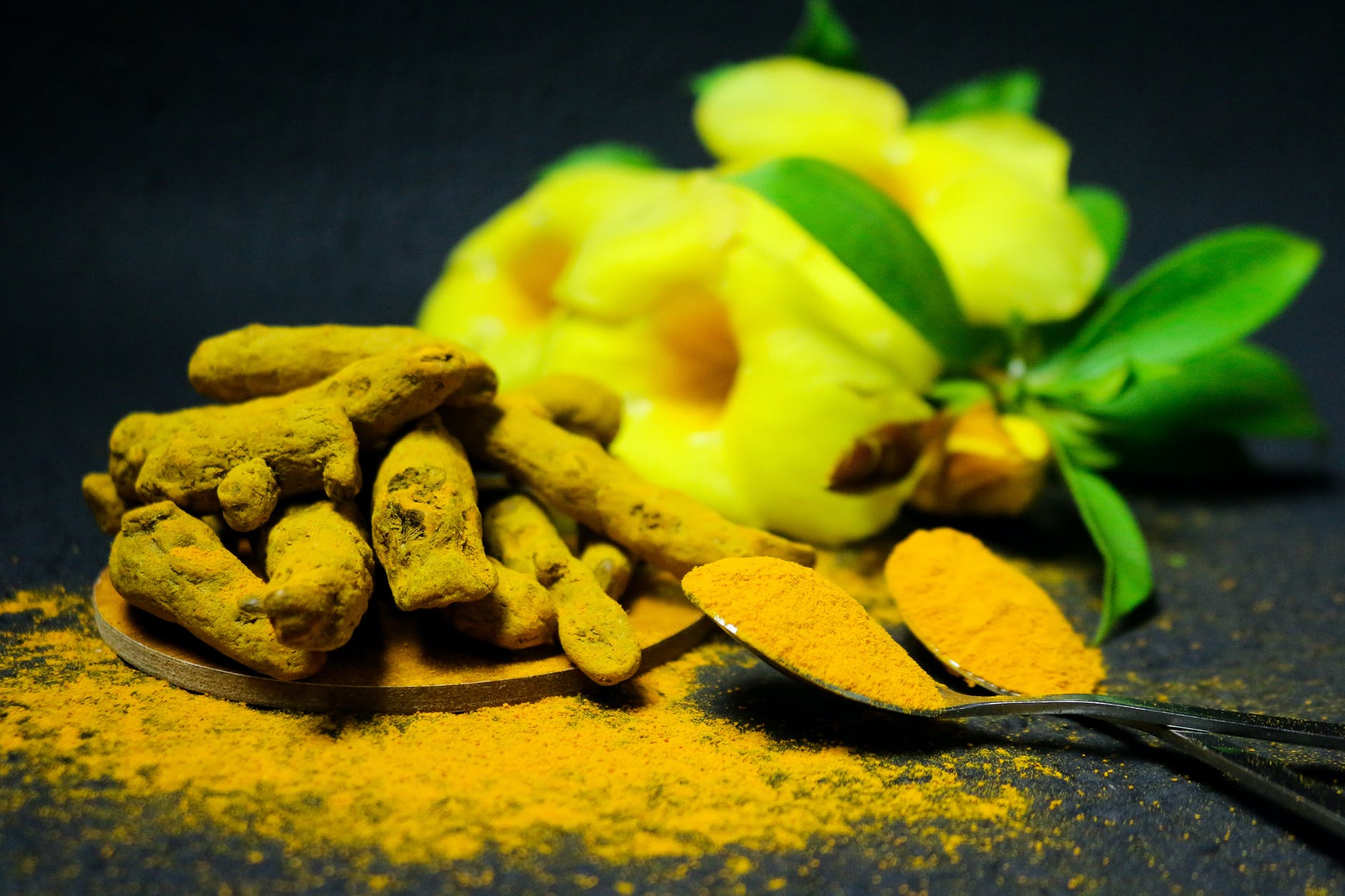Turmeric plant (Curcuma longa)
Turmeric is a herbaceous perennial plant which is cultivated in India, China, and several other Asian as well as African countries with hot and humid seasons. Turmeric plant has a short pseudo-stem, large oblong leaves and pale-yellow flowers which do not bear fruits. Its main stem is modified to underground rhizomes which are ovate, oblong, or pyriform and have a pale-yellow, reddish yellow, or brownish orange color.
Botanical classification of Turmeric:
Kingdom: Plantae (Plants)
Division: Magnoliophyta/ Angiosperms (Flowering plants)
Order: Zingiberales
Family: Zingiberaceae (Ginger family)
Genus: Curcuma (curcuma, a perennial rhizomatous herb, ~3ft in height)
Species: Longa (the most utilized of ~100 species of the genus Curcuma)
Turmeric’s names in the different parts of the world
Turmeric is a word which is derived from “terra merita”, which in Latin means “meritorious earth”. “Curcuma” (Latin) is derived from an Arabic word “Kourkoum”, which means “saffron”. In India, Turmeric is commonly called as Haldi and its other names in different languages are:
- Chinese (China): Chiang/Kiang Husang, Yuchin
- English (Most Western Countries): Turmeric, Indian saffron
- French (France & Others): Curcuma, Saffron de India, Souchet long, Souchet odorant, Teri-merit
- German (Germany): Glbwurzel, Kurkuma
- Hamsa (Arabian Countries): Ganjamau
- Hebrew (Israel): Kurkum
- Hindi (India): Haldi, Haldar, Halja
- Japanese (Japan): Ukon
- Ilocano (Philippines): Culiago, cuming
- Italian: Curcuma
- Malaya (Malaysia, Indonesia, Singapore and Thailand.): Watkam, wang keong, kunyit
- Persian (Iran): Darzardi, Zharachobabi, Tardhubah
- Portugese (Portugal and Brazil): Acafrao da india
- Sanskrit: Ameshta, Bahula, Bhadra, Dhirgharaja, Gandaplashika, Gauri, Gharshani, Haldi, Haridra, Hemaragini, Hridvilasini, Jayanti, Jwarantika, Kanchani, Kaveri, Krimighna, Kshamada, Kshapa, Lakshmi, Mangalaprada, Mangalya, Mehagni, Nisha, Nishakhya, Pavitra, Pinja, Pita, Patavaluka, Pitika, Rabhangavasa, Ranjani, Ratrimanika, Shiva, Shobhana, Shyama, Soughagouhaya, Suvarna, Suvarnavarna, Tamasini, Umavara, Vauragi, Varnadatri, Varnini, Vishagni, Yamini, Yohitapriya, Yuvati
- Spanish (Spain, South America): Curcuma
Also see >Turmeric Tea Recipe Video:
References:
- Ravindran et al. 2007. Turmeric. Boca Raton, FL: CRC Press
- Gopinath H, Karthikeyan K. 2018. Turmeric: A condiment, cosmetic and cure. Indian Journal of Dermatology Venereology and Leprology. 84(1):16-21.
*Disclaimer: Indian Food Simplified DOES NOT PROVIDE MEDICIAL ADVICE, DIAGNOSIS OR TREATMENT. The contents of the IndianFoodSimplified.com website, such as text, videos, graphical diagrams, images, and ANY other posts (“CONTENT”) posted by Indian Food Simplified team and its associates are for an informational and educational purposes ONLY. The CONTENT of this website is NOT FOR medical, diagnostic or treatment purpose, and should NOT be considered directly or indirectly as a medical advice. ALWAYS seek necessary professional advice from your physician, doctor or other qualified health provider about any questions you may have regarding wellness issues or medical conditions. NEVER disregard or delay seeking a professional medical advice because of something you have read or watched on Indian Food Simplified’s website or other pages including YouTube channel. Reliance on ANY information provided through CONTENT by Indian Food Simplified’s team is solely at your own risk.Indian Food Simplified’s owner and affiliated team members can NOT be held responsible for any issues or damage arising from any content found on IndianFoodSimplified.com & its associated platforms. Under NO conditions or circumstances Indian Food Simplified will be responsible for ANY CONTENT, including but NOT limited to, ANY inaccuracies in the CONTENT.


Hi, this is a comment.
To get started with moderating, editing, and deleting comments, please visit the Comments screen in the dashboard.
Commenter avatars come from Gravatar.